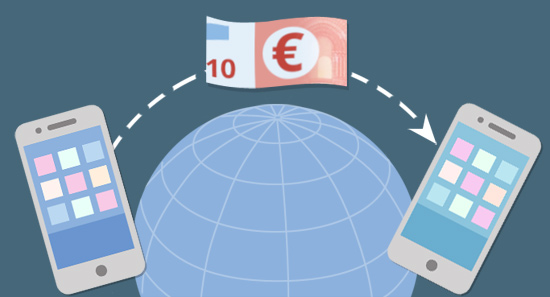1. Banking channels.

Banks give customers and clients access to their services in different ways.
Listen to the different definitions. Which channel is described in each definition?
Now listen again and read the definitions.
Banking channels
- Branch: This is a bank's retail location.
- ATM: This is a machine that dispenses cash and often accepts deposits as well, thus doing away with the need for a human bank teller. Some machines provide additional services as well.
- Mail: Many banks still accept cheque deposits using this method and also use it to communicate with their customers, for example, to send out statements.
- Call centre: This is a centralised office used for receiving and transmitting requests by phone. Incoming calls are usually requests for support or information from consumers. Outgoing calls are often telemarketing, promotion of products and services, and debt collection.
- Mobile banking: This is when customers use a mobile device to conduct banking transactions.
- Telephone banking: This is a service which allows its customers to perform transactions over the telephone, usually speaking to an automated system instead of a bank employee.
- Online banking: This term covers transactions, such as payments, transfers and statement updates, which are made on the Internet.
- EFTPOS: This is an Australian debit card–based system for processing transactions through terminals at points of sale. It also permits its users to withdraw cash from the terminal at the time of purchase. In many countries this function is known as debit card cashback.
- Relationship managers: These are usually for private banking or business banking, and involve personal visits to customers at their homes or businesses.
5. Read.
Read the first part of a magazine article.

Mobile banking closing in on poverty
Mobile banking is closing in on poverty, firstly by transforming the way that people in developing countries transfer money, and then by offering more sophisticated banking services which could change the lives of people all over the world.What do you think the article is about? Choose the best option to complete the summary.
6. Read more.
Read more of the article. Choose the best definition for each underlined word or phrase.

Mobile banking closing in on poverty
Mobile banking is closing in on poverty, firstly by transforming the way that people in developing countries transfer money, and then by offering more sophisticated banking services which could change the lives of people all over the world.
In 2010, nearly 3 billion people in developing countries had no access to financial services of any kind. However, 1 billion people throughout Africa, Asia and Latin America do have mobile phones. As a result, mobile money services are being set up all over the developing world. The majority of these services offer money transfers, which are incredibly important for migrants who are working abroad and need to send cash to their families. One such service is M-Pesa in Kenya, which in 2010 had over 9 million customers after its first three years in operation.
Mobile banking services are now aiming to offer their subscribers more than just money transfer facilities. They will soon be offering virtual bank accounts, allowing customers to not only carry out saving accounts operations, but earn interest and access credit and insurance services as well.
7. Read more.
Now read the last part of the article and mark the statements true or false.

Banking analysts agree: the message being sent out from countries like Kenya is that people in developing countries want access to banking; and mobile banking is the ideal way of delivering these services to millions of people all over the world who have a mobile but don't have a bank account.
Using mobile banking services, it is suddenly possible for money to be sent from cities to rural areas where it is needed, and security is increased as people are no longer travelling with large amounts of cash. In addition, access to basic financial services is being provided, giving people in developing countries the ability to save, transfer and invest even the smallest amounts of money. This access, in turn, could make all the difference to people all over the world. It could help a farmer to survive a poor harvest, or provide a person with no income the capital that they need to start a small business and take a step towards closing the poverty gap.
8. Not only ..., but also ...
Look at the different examples. We can use the structure not only ..., but also ... to emphasise two different but related points. We often use this structure when the second point is more surprising than the first.
Not only does this allow customers to carry out banking operations, but it also allows them to earn interest.
or:
Not only does this allow customers to carry out banking operations, but it allows them to earn interest as well.
Note how an auxiliary verb is put before the subject in this structure, like in a question.
Not only does this allow customers ... NOT: Not only this allows customers ...
Not only am I working ... NOT: Not only I am working ...
Put the words in order to make more sentences like the examples.
11. Writing Tutorial 2.
Write an email to your tutor. In the email, do the following:
In your own words, write a summary of the article "Mobile banking closing in on poverty", about mobile banking in Africa. DO NOT copy directly from the article. Write about 100 words.
In your summary, use the following:
Not only ..., but also ....
-ing forms
However, ...